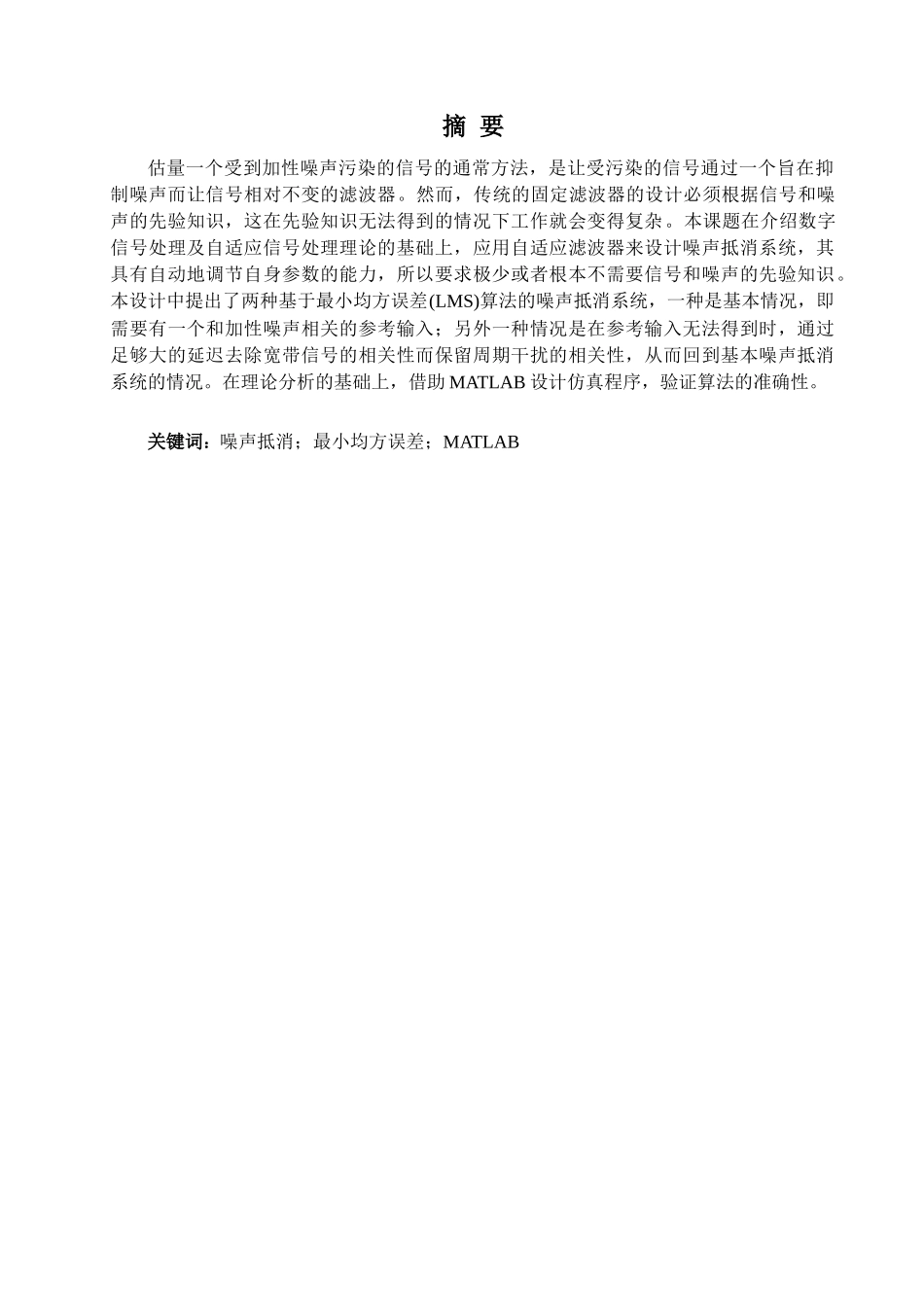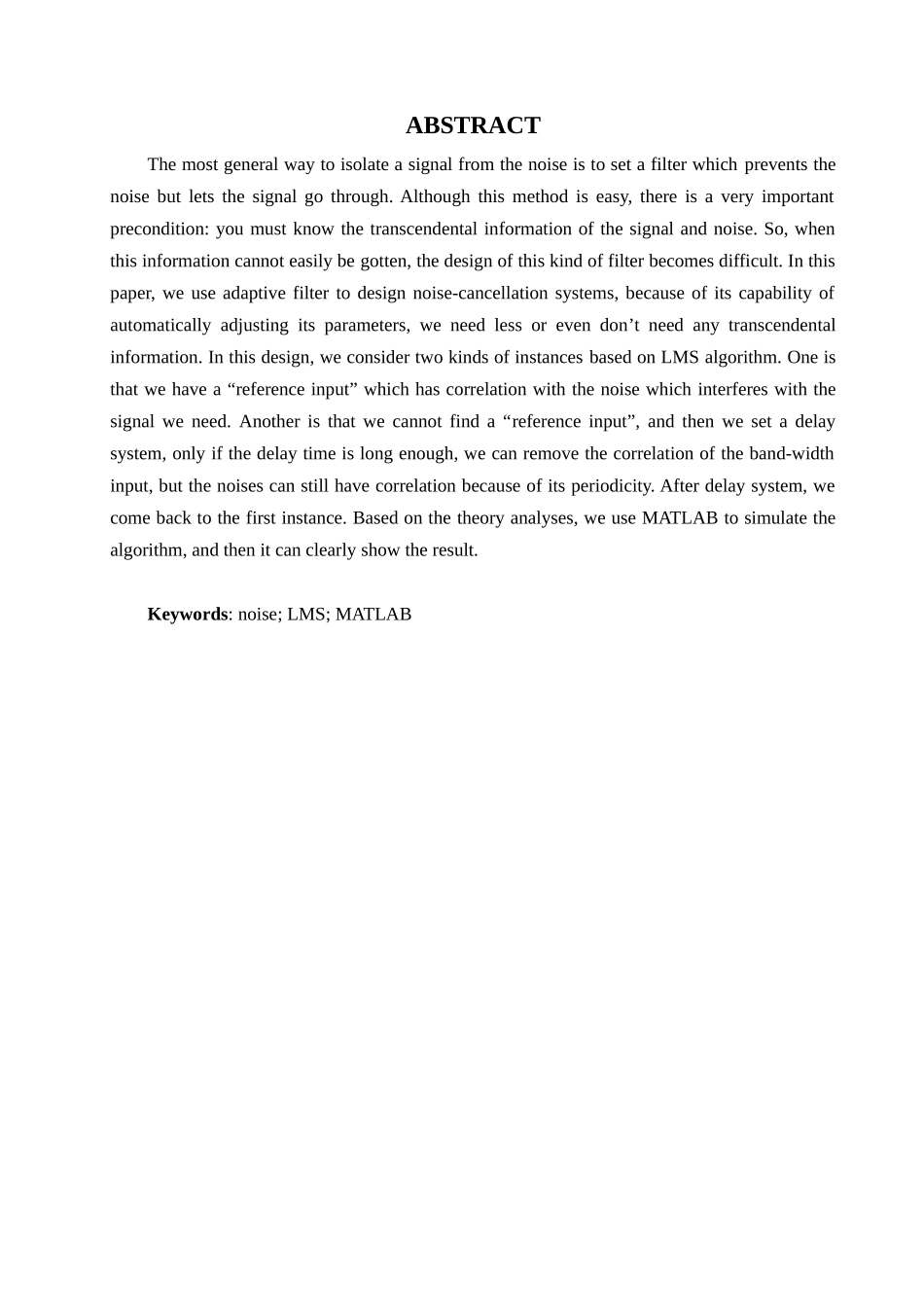摘 要估量一个受到加性噪声污染的信号的通常方法,是让受污染的信号通过一个旨在抑制噪声而让信号相对不变的滤波器。然而,传统的固定滤波器的设计必须根据信号和噪声的先验知识,这在先验知识无法得到的情况下工作就会变得复杂。本课题在介绍数字信号处理及自适应信号处理理论的基础上,应用自适应滤波器来设计噪声抵消系统,其具有自动地调节自身参数的能力,所以要求极少或者根本不需要信号和噪声的先验知识。本设计中提出了两种基于最小均方误差(LMS)算法的噪声抵消系统,一种是基本情况,即需要有一个和加性噪声相关的参考输入;另外一种情况是在参考输入无法得到时,通过足够大的延迟去除宽带信号的相关性而保留周期干扰的相关性,从而回到基本噪声抵消系统的情况。在理论分析的基础上,借助 MATLAB 设计仿真程序,验证算法的准确性。关键词:噪声抵消;最小均方误差;MATLABABSTRACTThe most general way to isolate a signal from the noise is to set a filter which prevents the noise but lets the signal go through. Although this method is easy, there is a very important precondition: you must know the transcendental information of the signal and noise. So, when this information cannot easily be gotten, the design of this kind of filter becomes difficult. In this paper, we use adaptive filter to design noise-cancellation systems, because of its capability of automatically adjusting its parameters, we need less or even don’t need any transcendental information. In this design, we consider two kinds of instances based on LMS algorithm. One is that we have a “reference input” which has correlation with the noise which interferes with the signal we need. Another is that we cannot find a “reference input”, and then we set a delay system, only if the delay time is long enough, we can remove the correlation of the band-width input, but the noises can still have correlation because of its periodicity. After delay system, we come back to the first ...


